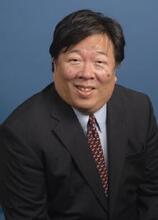As leading health policy experts have explained, under the fragmented U.S. health insurance system, virtually any effort to cover more of the uninsured — including efforts that rely on tax deductions or credits for the purchase of health insurance in the private market, as well as public program expansions — will result in some “crowd-out” (in the substitution of one type of health insurance for another) or in more heavily subsidizing people who are already insured, rather than in extending coverage to those who are uninsured. For example, an analysis of the Administration’s health tax proposals from last year by the noted health economist Jonathan Gruber estimated that 77 percent of the benefits would go to people who already are insured.
In comparison, the Congressional Budget Office estimates that under the bipartisan SCHIP agreement passed yesterday by the House on a 265-159 vote, about one-third — or 2 million — of the 5.8 million children who would gain SCHIP or Medicaid coverage by 2012 under the legislation would have otherwise had private coverage, a percentage less than half the 77 percent for the Administration proposals.[1] The CBO estimates also show that 3.8 million children who otherwise would be uninsured would gain coverage by 2012.
In any case, the phenomenon of crowd-out related to SCHIP and Medicaid is widely misunderstood. Many people assume that CBO’s estimate of the bipartisan agreement means that the families of 2 million children who currently have private coverage would voluntarily drop that coverage for their children and enroll the children in SCHIP or Medicaid instead. As CBO director Peter Orszag has explained, this is not correct.
CBO defines “crowd-out” to include all children who are uninsured when they enroll in SCHIP or Medicaid but whose families would — in the absence of SCHIP or Medicaid — have purchased private coverage for these children at some point in the future, possibly many months later. Orszag has explained that these children account for a substantial share of those whom CBO estimates would otherwise have private coverage.
In other words, a large share of the SCHIP “crowd-out,” as estimated by CBO, involves children who are uninsured now but who would obtain private coverage at some later point if SCHIP (or Medicaid) coverage were not available to them. These are not children who had private insurance that their families voluntarily dropped for public program coverage.
Surveys show, in fact, that only a small share of children had private health insurance before enrolling in SCHIP or Medicaid. The Congressionally-mandated 10-state evaluation of SCHIP found that while 28 percent of newly enrolled children had private coverage before joining SCHIP, half of them — or 14 percent —lost their private insurance for involuntary reasons before enrolling in SCHIP, such as when parents lost their jobs or became divorced or employers stopped offering health insurance for dependents.[2]
CBO estimates an overall crowd-out rate of about one-third under the bipartisan SCHIP legislation in part because of what CBO estimates would happen after some children who are uninsured enroll in SCHIP or Medicaid. For example, an unemployed parent of an uninsured child who enrolled in SCHIP may eventually get a low-paying job in which private insurance is available but employees have to pay hefty premiums and deductibles (or the insurance has large gaps). In such cases, the low-income parent may choose not to pick up private insurance for her children because the children already have satisfactory insurance through SCHIP. CBO counts these children as individuals who would otherwise have had private insurance and thus as part of its crowd-out estimate. Referring to the families whose children show up as “crowd-out” children in CBO’s estimates, Orszag has said that “For many such families, after they are on the program [SCHIP], they could have had an opportunity to pick up private coverage but don’t.”[3]
Some who cite the CBO crowd-out estimates misuse them, contending that all of the children included in CBO’s crowd-out estimate are children who would voluntarily drop existing private health insurance to join SCHIP or Medicaid. At the point that they would enroll in SCHIP or Medicaid, however, many of the children cited in the CBO crowd-out estimate would be uninsured, and they often would remain uninsured for some period of time unless they enrolled in public coverage.
